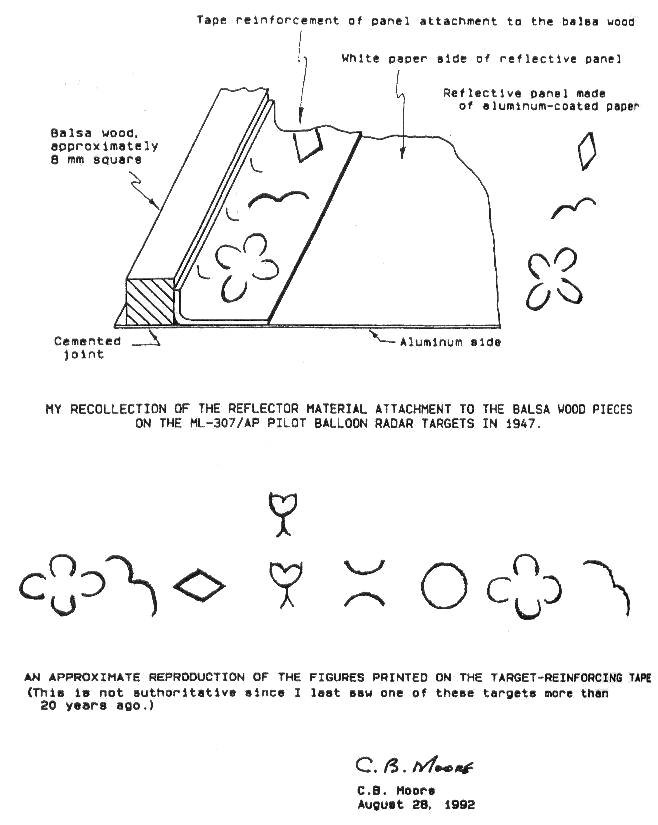
|
The possible connection between the Roswell incident and quite ordinary balloons of New York University (NYU) used in the then secret Mogul project was put forth by Robert Todd and Karl Pflock. One of the three surviving Project Mogul scientists who was identified and interviewed for the Air Force report was Charles B. Moore, incidentally a UFO witness in a completely different case, and professor emeritus of physics at New Mexico Institute of Mining and Technology in Socorro.
Mogul's "official" purpose was to develop constant-level balloons for meteorological purposes, while in reality this technique was intended to be used to detect possible Soviet nuclear bomb explosions with low-frequency acoustic microphones attached to high altitudes balloon clusters, who were actually clusters of ordinary weather balloons. Charles B. Moore participated in these balloons launches in June and early July 1947, from Alamogordo Army Air Field in New Mexico.
Several witnesses of the Roswell debris noted that some I-beam parts had some sort of unrecognizable "hieroglyphs" type carvings or embossing, other mentioned purple flower-like designs (see witnesses' section). In any event, Moore saw the flower-designs of the adhesive tape used in the radar targets attached to the balloons, and the coincidence is now cited as evidence that the debris were indeed the remnants of a balloon of Project Mogul. Moore was of course intrigued that purple flowers were the ornament of the radar target, but he found out a major named John Peterson who told him that the Army had their radar target made in a toy factory who apparently only had this decorative adhesive tape at hand.
In any event, the purpose of this page is not to discuss the matter but simply to show the drawing above, made and captioned by Charles B. Moore in 1992 to show his recollection of the appearance of radar targets of the balloons.